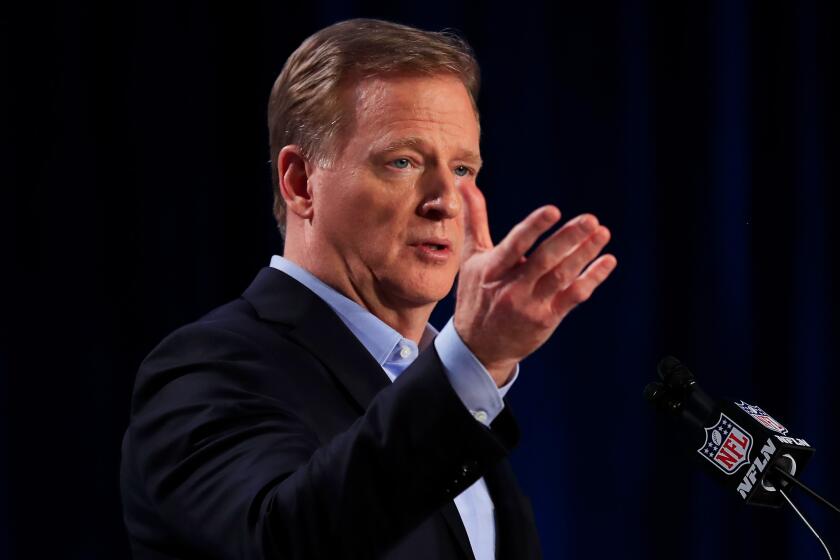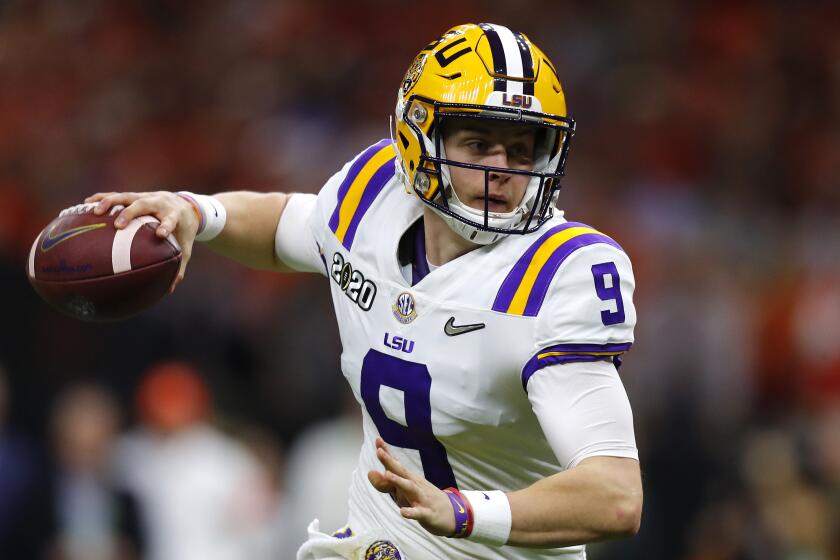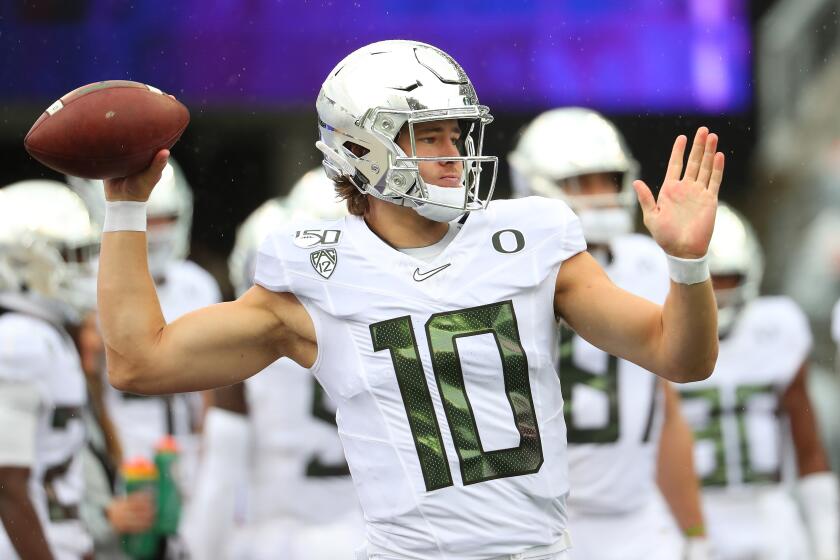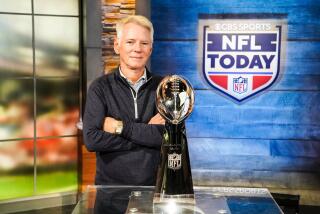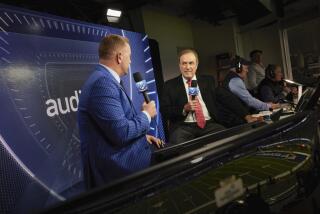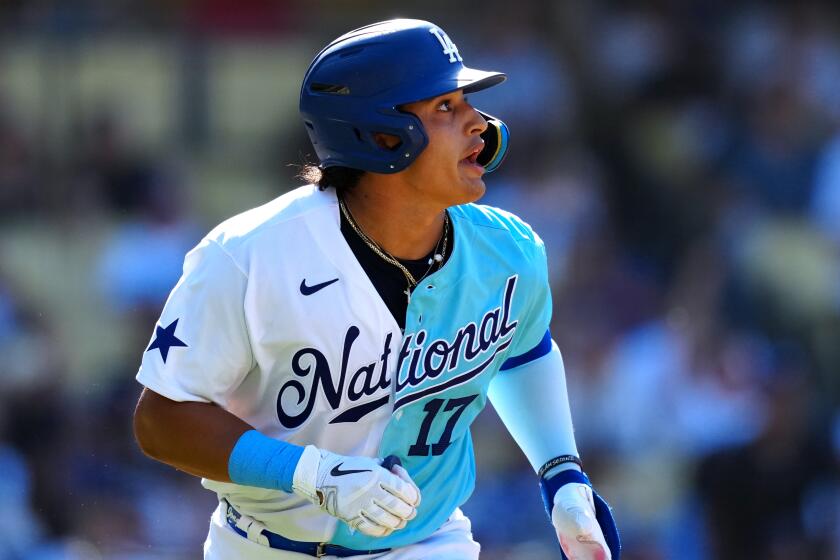Q&A: Roger Goodell tackles pulling off virtual 2020 NFL draft
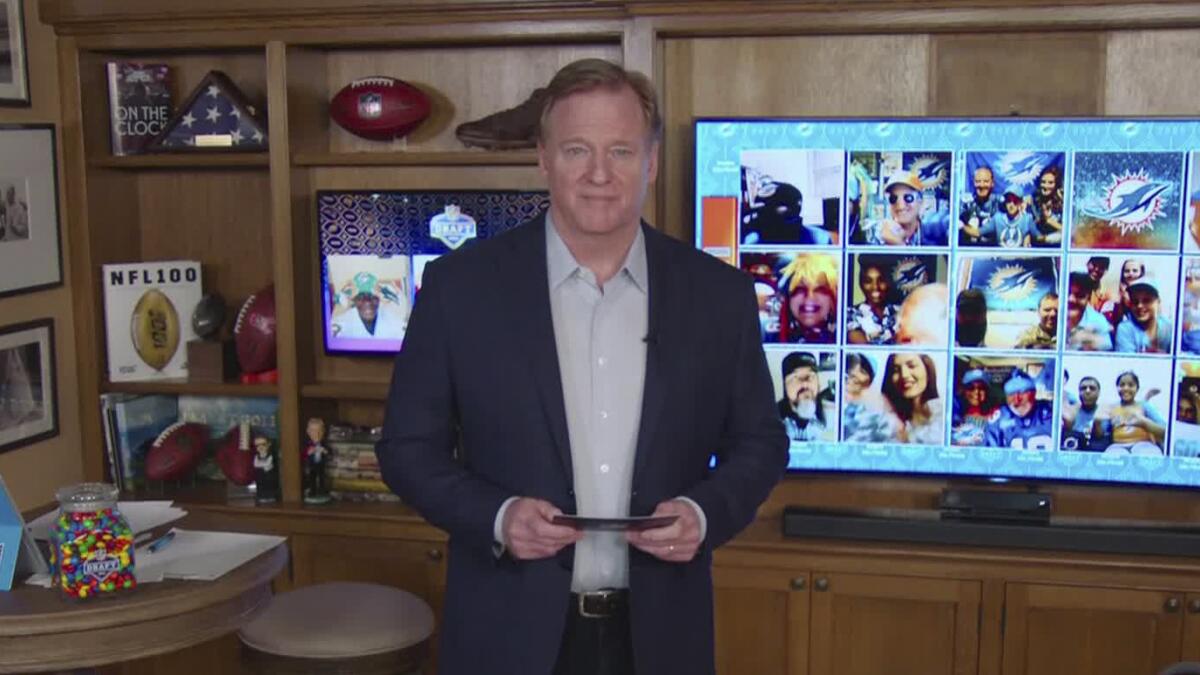
NFL Commissioner Roger Goodell spoke exclusively to Los Angeles Times writer Sam Farmer on Sunday, a day after the league concluded its first virtual draft.
So how did you feel the draft went?
It came out better than any of us thought. I had told them a few weeks ago that I wasn’t going to judge this on ratings or normal numbers — attendance, obviously that was not a factor. It’s all going to be about, can we demonstrate that we can work from home safely, productively, which goes to the operation of the draft itself? And can we send the right tone and messaging. And finally, can we do something really to give back to our communities that are so much in need? I think those things we really hit.
What was important to do in order to make the teams comfortable with the format?
The most significant thing is, everybody is doing the same thing. It’s not like one team is going to be in their facility, and another team has got to sit and go through all this other stuff. We put redundancy behind their communications. We didn’t have one incident where we had to extend the clock or do anything unusual. In fact, it worked just as well as it worked during a normal draft. We had zero problems on that front.
Did you learn something from doing the dress rehearsal?
Definitely. The whole reason for the mock draft was to work out the kinks. We had a team who had the wrong phone number in the mock. But those are easy things to correct, and we did. And it’s also just getting teams and our team comfortable with using the technology.
When change occurs, some people react really well to it and some people don’t, because it usually requires more work, it requires some anxiety, it requires some risk. This was ambitious. It was an ambitious plan.
Overall, what did you learn?
We can accomplish things that we don’t think we can accomplish. The word I use is we have to adapt. You have to pivot, and you have to work the problem for solutions, and that’s what we’ve done. When we saw a problem, we fixed it. We found a way to accomplish it.
The 2020 NFL draft had some rough edges, but the ingenuity of the broadcast could offer a glimpse into the new normal for sports.
It was different. We can’t hug the draft prospect. So what are we going to do to find something that’s as close and may even have additional benefits? The additional benefit for us was, we got to do it with more. I think I was on FaceTime with 70 or 75 players. We couldn’t have done that in the past. We could have, but we wouldn’t have thought about it.
When you took over as commissioner, you made the draft a primetime event. Then you moved it from city to city. Were those changes unwitting building blocks for what we saw this weekend?
Challenges drive the innovation. When Radio City said that we couldn’t have the draft until June, something that I had been pushing for a while which was, how do we move this draft around so that other fans can have the opportunity? There’s risk to it. You have to do things differently again. That always has the risk of, can you do it and execute? But also you’re leaving New York. You’re leaving the No. 1 market in the world.
Success is something that inhibits innovation because you don’t take the chance because you’ve already reached success.
Our point and our philosophy is we can always continue to innovate and learn from it so it makes us better. We had to go on the road, and look what happened to it. We took it to prime time, then we went on the road, and now we’re doing something that’s got — there are clearly a lot of elements from the last few days that we’ll want to incorporate going forward.
So building blocks?
You’re building a franchise. It’s like building a house. You don’t start with a roof. And you can’t put the roof on the same time you do the foundation. You’ve got to say, “OK, so how do we do this so this thing is long lasting and comes out to be not only functional but beautiful and impactful?” People are going to look at that, look back and say, “Wow, that’s beautiful. That’s great.”
A pick-by-pick breakdown of the first round of the 2020 NFL draft, which was held virtually for the first time because of the coronavirus outbreak.
The production was pretty smooth, but what was going on behind the scenes?
Our IT folks did a great job. [Executive Vice President of Club Business & League Events] Peter O’Reilly did a great job of keeping everyone focused. [Chief Information Officer] Michelle McKenna was great too.
We were trying to do this safely. We weren’t trying to cause greater risk with people coming into people’s houses. So coming into someone’s home, we had to know we were doing that safely and not putting people at risk. Whether people coming into the house were at risk, or people in the house were at risk.
The technical side itself, with getting equipment to getting the lines — AWS, their CEO [Andy Jassy] reached out and said, “I see you’re doing this, we want to help.” Verizon [CEO Hans Vestberg] said, “We’re partners and we want to help.” Microsoft. Bose, ESPN, we used all of them. We needed their equipment, their lines, some software. We needed security. That was a big thing on these lines. The thing I was most concerned about, other than the safety, was the security of the lines and the information so that someone’s not accessing someone’s board or conversation. That was a huge issue for us.
What are the memories you’ll hang onto?
We had a cool thing yesterday. We called it the fan inner-circle. Those were 15 or so fans that were selected to be up on the screen. That was really cool because I could interact with them. You guys didn’t see a lot of that because I was doing it before the pick came in.
To get in there, you had to submit something in video. One of them was a doctor in Baltimore who wears his Ravens shirt. I FaceTimed with him yesterday. Basically, he looks at the FaceTime and says, “Yeah, I can’t talk right now, I’m in the middle of something.” He says, “Who is this?” I say it’s Roger Goodell, and he goes, “What?”
Justin Herbert is going from small town to big time in L.A. But to last, he and the Chargers are going to need to win, which is one thing he happens to be good at.
The guy was almost in tears. The thing he submitted was how he uses the Ravens with his patients to talk and to raise their spirits. What he’s been doing with COVID. He’s right on the front lines. It’s powerful as hell. So we just gave him two Super Bowl tickets. I thought the guy was going to cry. It was like the coolest moment.
When you see those stories behind those faces, and you bring them to life, it’s creating moments. One of those is powerful. Then you do it in 20 different places. People love seeing that.
What about moving forward? What do you draw on from this experience?
Our next task is really to get our facilities open. We’re putting protocols together. ... There are challenges. There are things that are unknown that we need to figure out. We need to get experts in and help us. But the objective here is X, let’s figure out how to get there.
The objective for us is let’s get our facilities open. The challenge is you’ve got 50 states, and 32 teams operating in a little bit over half of those. How do we do that, because you’ve got different standards. So for me the focus is, let’s go back and show the protocols and let’s work with each of our states, obviously on the federal side too, and say, “Here’s how we’re approaching this.” And make sure we’re doing this in a way that’s responsible and safe. That’s the key.
That’s what we did with the draft. Maybe we got some credibility in doing the draft like we did so that people see that we can do these kind of things. And that’s externally and internally, by the way. Part of it is convincing your own people that, yeah, we can do this. We all now know we can do these kinds of things.
The challenges are now going to be different. But they’re the same, which is, work the problem. That’s part of what I love about the job too. I’m pretty relentless.
More to Read
Go beyond the scoreboard
Get the latest on L.A.'s teams in the daily Sports Report newsletter.
You may occasionally receive promotional content from the Los Angeles Times.

